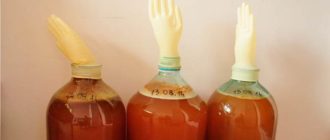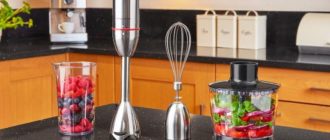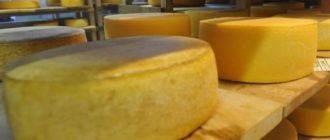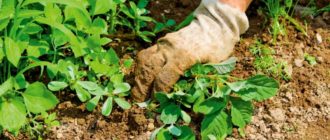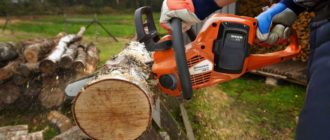Cucumbers are one of the key garden crops grown by summer residents throughout the country. In this regard, the question of choosing the right planting material is always acute for gardeners, especially before the start of the season. Many continue to use self-prepared seeds, but this is not the right decision, since from year to year the fruits will turn out to be smaller and smaller. Others, on the contrary, use hybrid varieties developed specifically for certain climatic conditions.
We will try to help you navigate in the selection of the right seeds, especially since there are a lot of them on the market - they are easy to get confused in. We begin our review with the rules for selecting the right planting material.
Summary of the rating:
What do you pay attention to when choosing cucumber seeds?
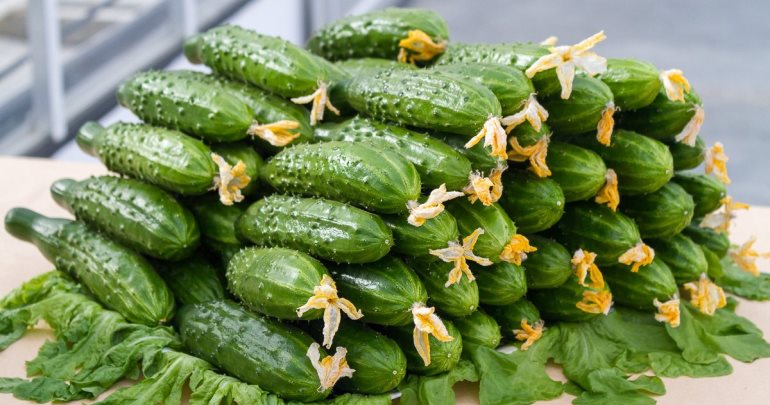
First of all, the gardener should decide what kind of varieties he is going to deal with - varietal or hybrid. The first type is obtained by crossing plants belonging to the same species, the second (labeled F1 on the packaging), is derived from a combination of different species. Varietal species need more careful care, but they can become a source of seed for subsequent seasons. Caring for hybrids is much easier, they have higher yields and resistance to parasites and diseases.
Next, you need to consider in what conditions these crops will be grown. If cucumbers are planned to be planted in greenhouse conditions, then parthenocarpic varieties are suitable here. They are self-pollinating, therefore they do not need insects. Pollinated varieties are an ideal choice for open ground. The time of the start of the harvest also plays an important role: on sale you can find special winter varieties that feel great when there is a lack of sunlight - they are planted in the greenhouse in the fall, and already in January they can give a fairly large crop.
Hybrid varieties can be early ripening or late ripening - the first variety produces fruits already 60-70 days after sowing, with the second one you will have to wait about 110-120 days. Summer residents most often prefer spring-summer varieties that grow quickly and resist disease well. You should also decide for what purpose the crop will be used. If cucumbers are intended for pickling, then you need to choose varieties with a thin peel and dense pulp, for eating cucumbers having a dense skin and crisp flesh of medium or large sizes are best suited. There are universal varieties.
When we compiled our rating, we tried to take into account all these points, based primarily on user reviews, as well as on the ratio of price and quality of planting material. We hope that our rating will be informative and useful for you.
Greenhouse varieties
5. Variety of cucumbers Murashka F1
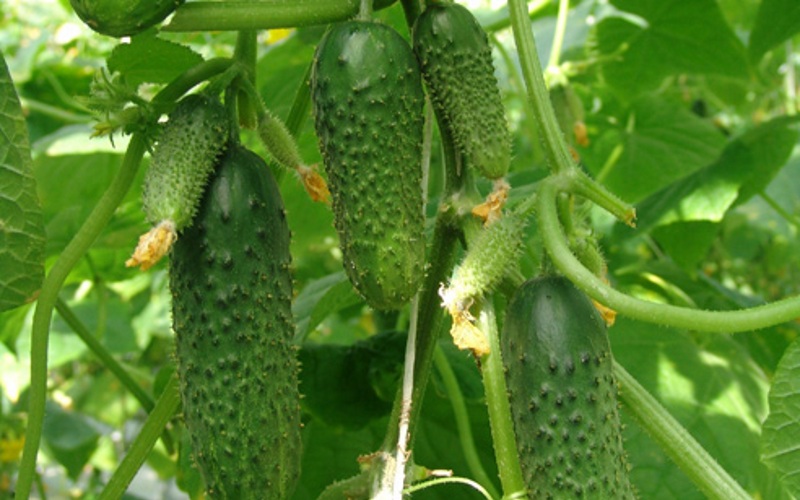
This is one of the most versatile varieties - plants will feel good both in greenhouse conditions and in open ground, they can be grown even on the balcony.Cucumbers do not require pollination, the fruits retain their freshness for a long time, they do not have bitterness, the crop is always stably high. It appears already 40 days after planting seeds. The sizes are average, there are not too many branches, however, if they are, then all will be determinant with a predominance of female flowers.
There are a lot of leaves, they are small, smooth to the touch, almost no empty flowers. The fruiting is long, the plants are resistant to the most common diseases - powdery mildew and cladosporiosis, but care should be taken to prevent diseases such as root rot and downy mildew. The size of the fruits is average - rarely grow more than 12 cm in length, but you can collect them when they are at least 8 cm. The average weight is about 100 grams. The shape is cylindrical, there are few spikes, but they are very spiky. Universal cucumbers - suitable for both eating and salting.
Benefits:
- Universality both in terms of cultivation, and in terms of consumption;
- High yield;
- Long fruiting period.
Disadvantages:
- Resists not all diseases of cucumbers.
4. Variety of cucumbers Boy with thumb F1

It is an early ripe variety that will yield about 35-40 days after sowing. It belongs to the hybrid group, it feels good in tunnels, spring greenhouses and in the open ground. The length of the fruit is about 9-12 cm, there are small tubercles on the surface, the weight reaches 70-80 grams. The pulp is fragrant; even overripe cucumbers do not produce voids or bitterness. Seeds are small, almost invisible. Fruits have excellent taste characteristics - they can be used in food fresh, as well as for conservation.
Such a variety gives an optimal yield when grown without seedlings. It is recommended to soak them for several hours before planting in the soil. Seeds are carefully examined before planting, making sure that they are full-bodied and about the same size. If this condition is met, it will be possible to achieve almost 100% germination. It is not necessary to feed the plants with chemicals, but with various natural means - litter, slurry, ash, husk and so on.
Benefits:
- Very tasty fruits;
- High yield;
- Long fruiting period;
- Ideally resists various diseases.
Disadvantages:
- Empty flowers are found, especially on branches from the main stem.
3. Variety of cucumbers Benefis F1
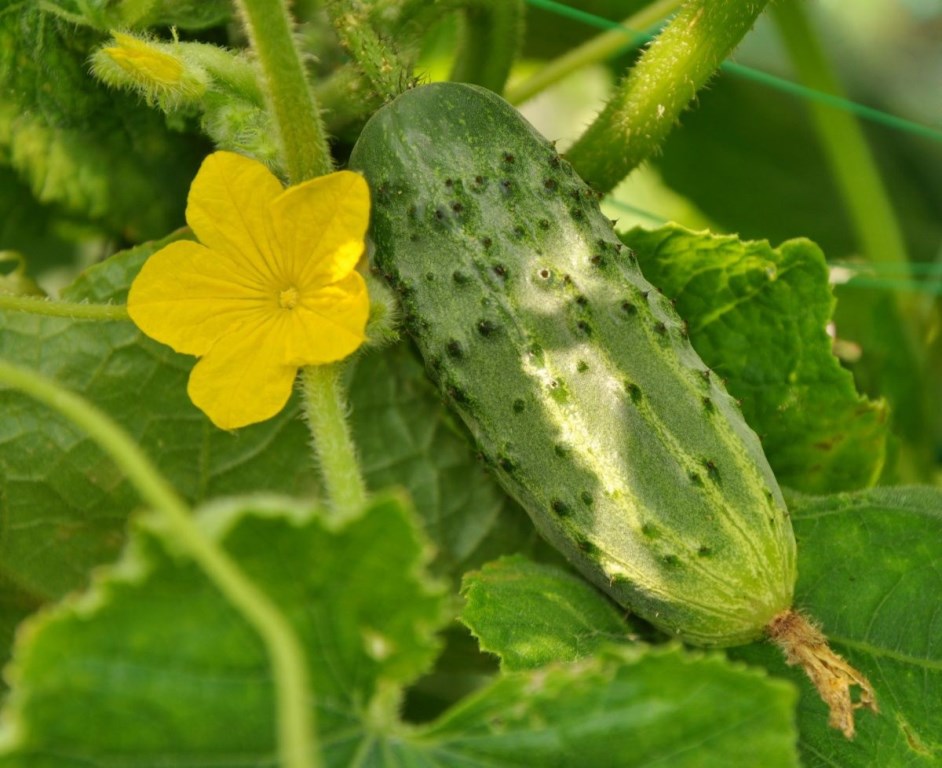
This hybrid variety can also be attributed to high-yield varieties, in addition, such cucumbers practically do not need care. It is considered to be of medium-early varieties, about 50 days elapse from germination to ripening, it is self-pollinated, flowers in most cases are female, practically no flowers are observed, fruit bundles of 3-6 are tied. About 7-8 kg of cucumbers can be removed from one bush. In terms of growth conditions, the culture is universal - it can grow in a garden, in a greenhouse or in a greenhouse, you can use cucumbers fresh, they are suitable for any harvesting.
It is worth noting that the lash grows quite long, so it will have to be molded during the growth process, especially if it grows on a vertical trellis. The fruit mass is about 100 grams with a length of not more than 13 cm. The shape is oblong, there are short stripes on the skin. The taste of cucumbers is pleasant, there is no bitterness. The pulp is quite dense, the fruits perfectly tolerate long-term transportation, well stored for a long time. Plants are resistant to disease, lack of moisture, low temperatures.
Benefits:
- High yield;
- Resistance to negative weather conditions;
- Unpretentiousness in terms of care.
Disadvantages:
- The lash is long enough, it must be molded, otherwise it will negatively affect the yield.
2. Variety of cucumbers Alekseich F1
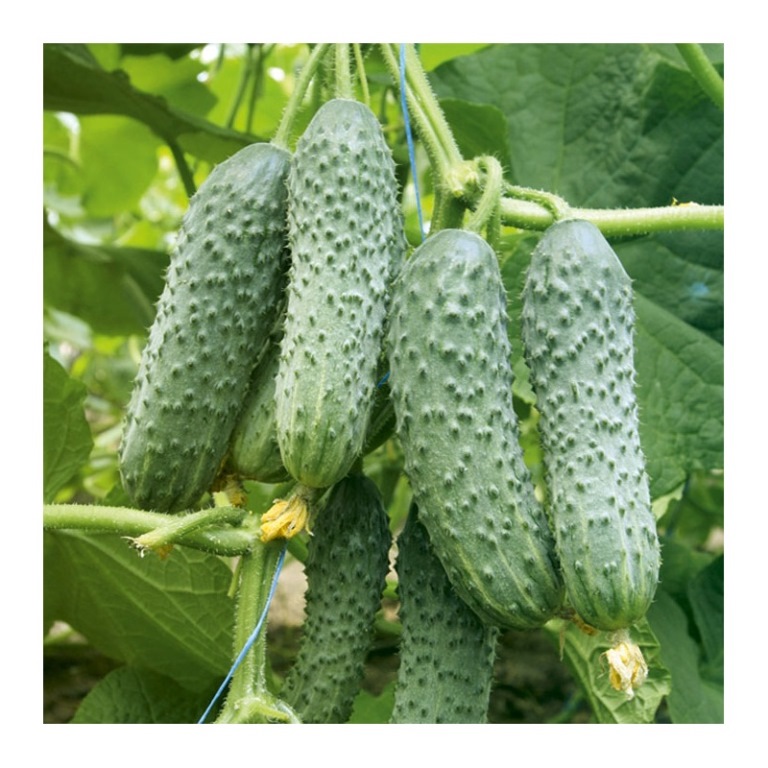
The variety, quite popular among summer residents and farmers, is largely due to its high yield and rapid ripening of fruits - from the emergence of seedlings to the first picking of cucumbers, no more than 45 days pass (sometimes less, depending on climatic and weather conditions). This hybrid is self-pollinated, it feels good under a film of unheated greenhouse or in the open ground. Plants are not too large, few side shoots. It blooms with nodes, in each of which up to 3 fruits are formed.
The shape of the cucumbers is cylindrical, elongated, on the skin there are green stripes of various lengths, little tubercles, the length is in the range of 7-9 cm with a weight of about 70 grams. The pulp is crispy, firm, without bitterness. Fruits are suitable both for fresh consumption and for canning. About 14 kg can be collected from one square meter of crops. It can be grown in the form of seedlings, it is allowed to plant it in open ground when the soil warms up to about 15-16 degrees. It is recommended to plant no more than 5 shoots per square meter, if cucumbers grow on trellises, then there should be even less - 3 or 4 plants per square soil. Soil is pre-fertilized by adding leaves or sawdust in the winter.
Benefits:
- Friendly formation of fruits, due to which a high yield is immediately ensured;
- Prolonged fruiting;
- It resists any disease well.
Disadvantages:
- Soil must be prepared for this grade at the end of the previous season.
1. Seeds of cucumbers Sankin love F1

The most fruitful hybrid among all the best varieties of cucumbers - fruiting begins early and lasts quite a long time. All plants are of the female flowering type, almost do not branch, which greatly facilitates the care of them. It blooms in nodes, and up to 12 fruits can be in one node. It is generally accepted that this variety is ideal for canning and pickling in a jar, but it also goes well in food: the fruits are not bitter, have a thin skin and dense, crisp pulp. On the surface there are pronounced tubercles, the length of the cucumbers is in the range of 8-11 cm, they can withstand transportation well even over long distances. It resists diseases such as olive blotch, the virus of ordinary cucumber mosaic. Not sensitive to all varieties of powdery mildew, including downy mildew.
Experienced gardeners recommend forming plants strictly in one stem - so they will receive a sufficient amount of sunlight, and all the necessary nutrients will enter into the set fruits. After the first crop is obtained, you should feed the cucumbers with high nitrogen content. They should grow quite far from each other - up to two shoots are allowed on one square meter. This variety loves plentiful watering, always warm water. Harvest should be taken daily - if these recommendations are followed, record yields can be achieved: from one square meter, you can get about 40 kg of cucumbers during the season.
Benefits:
- Very high yield;
- Disease resistance;
- Small sprawling bushes.
Disadvantages:
- With proper care, they are not.
The best frost-resistant varieties
5. Variety of cucumbers Altai

It is a fairly hardy plant, the whips and roots of which are able to withstand significant cooling. The length of the lashes is small, it is only about 80 cm, so about 5 plants can be planted in one square place - they will not interfere with each other. The peel of the fruit is quite dense, inside they are soft, therefore they are recommended exclusively for fresh consumption.The cucumbers themselves have the shape of an ellipse, almost no tubercles are observed on the surface, the color is light green in length, they are about 9-10 cm, however, quite large specimens are found up to 15 cm.
Taste characteristics are average, the fruits may begin to bitter in case of lack of moisture. The variety can be attributed to quickly ripening. Productivity is average, however, it will be enough for food. Plants do not require any special soil preparation; they can be grown even in rather thin soils, which are not rich in nutrients.
Benefits:
- Frost resistance;
- Unpretentiousness;
- Long fruiting period.
Disadvantages:
- Suitable for human consumption only.
4. Variety of cucumbers Serpentine

A fairly productive variety for cucumbers that can withstand low temperatures, fruits ripen early, are well suited for pickling, and for direct consumption. The bushes are quite powerful, do not grow long, there are not too many side lashes, they are characterized by a female type of flowering. From the time of planting to the time of harvesting the first fruits, about 45 days pass. The shape of the cucumbers is oblong, cylindrical, in length they are up to 12 cm.
Appearance is very beautiful, the flesh is crispy, without the slightest hint of bitterness, fragrant. The peel is thin, the average weight is 80-90 grams. From one bush you can get about 20 kg, but if weather and climate conditions allow, then this indicator can be done even more - up to 25 kg. The variety bears fruit for a long time - during all the summer months. They plant in the soil in May, the seeds are not pre-soaked beforehand, between plants there should be about 30 cm.
Benefits:
- Superior yield
- Great presentation;
- Juicy fruits;
- Long shelf life and transportability;
- Not capricious.
Disadvantages:
- There are many thorns on the fruits, so they are washed with a special brush.
3. The variety of cucumbers Kustovoi
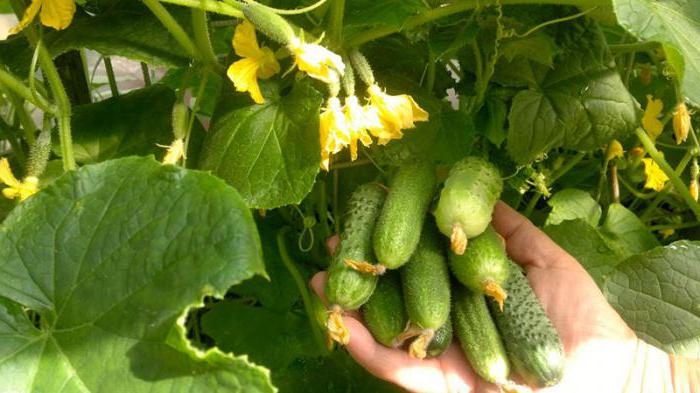
Another fairly compact option among the varieties of the best cucumbers - its maximum length of the lash does not exceed 70 cm, in total there are no more than 2-3 side lashes. This plant is perfect for small areas where there is not enough land all the time to plant all the desired crops. This variety is parthenocarpic, so it can be grown in greenhouse conditions, but in the greenhouse the yield will be much lower than in open ground. Cucumbers are considered early ripening - the crop can be removed already 20 days after the appearance of the first seedlings.
The size of the fruit is not very large - no more than 12 cm with a weight of about one hundred grams. Ovoid in shape, slightly elongated. Well suited for conservation, but fresh food is also suitable. The palatability is excellent - the flesh is very juicy and crispy, the skin is not too dense. You can grow both seedlings and seed types, however, in the first case, you can get the crop much earlier - they are planted in the soil either in late May or early June. After planting, until the plants take root in the soil, they need to be covered with a film overnight. Adult plants are not afraid of temperature drops and cold nights, and they are not susceptible to disease.
Benefits:
- Unpretentiousness;
- Does not require much land;
- Good taste;
- It perfectly resists various diseases.
Disadvantages:
- Fruiting ends in about five to six weeks.
2. Cucumber Variety Competitor
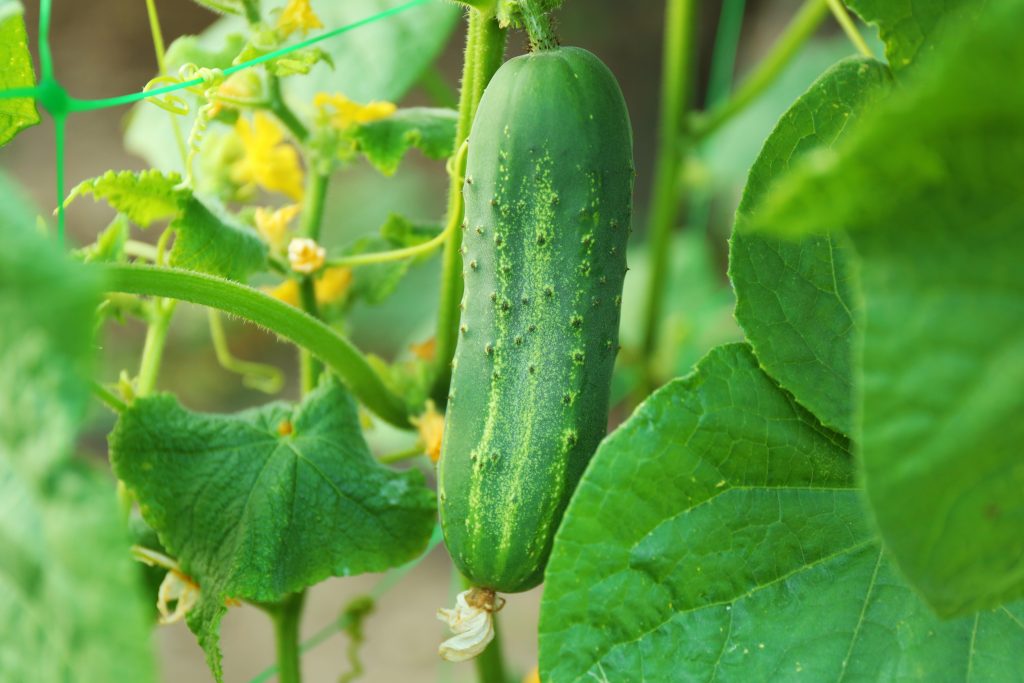
Professional agronomists classify this variety as precocious - the first fruits can be obtained in about 45-50 days. Sowing is carried out in mid-May, when the nights are already at a positive temperature. The stem grows very quickly, produces antennae, so it is well suited for trellis. The leaves are medium sized, heart-shaped. It begins to bloom very quickly - literally after the appearance of the fifth and sixth leaves. The variety needs pollination. Productivity is average, even closer to low - only about 3-4 kg per square meter.The fruiting period is long and is about 90 days. It can be either longer or shorter depending on weather and climatic conditions. There were cases when the lashes bore fruit even in mid-October.
Cucumbers have a standard shape, painted in dark green color, the fruits are usually large - in length can reach 18 cm with a weight of 130-200 grams. This greatly facilitates harvesting. Taste is good, bitterness is absent, the flesh is slightly sweet, juicy. They can be used including for conservation, both separately and in combination with other vegetable crops.
Benefits:
- Non-hybrid variety, so the seeds can be used for planting the next year;
- Good taste;
- Unpretentiousness.
Disadvantages:
- Long lashes;
- Low yield.
1. Variety of cucumbers Nezhinsky
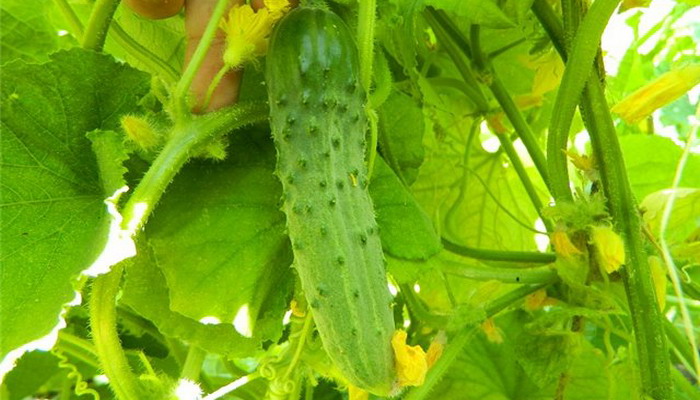
Another varietal option, which also well withstands the short-term effect of low temperatures. It belongs to the pollinated, does not ripen as quickly as we would like - about 60 days pass after the emergence of seedlings. Scourges can reach about 2 meters in length. The leaves are bright green in color and small in size. The average yield is about 12-14 kg per square meter. The palatability is high: the pulp has a characteristic cucumber aroma, bitterness does not occur even with a lack of watering. The peel is dense, there are many sharp black spikes, the fruit weighs no more than 100 grams.
Before planting, agronomists recommend disinfecting the seeds by putting them in a potassium permanganate solution for a day. This allows you to protect them from the occurrence of diseases of the root system. Planting is allowed in fairly cool soil - about 10 degrees. It is watered about once a week, after the emergence of seedlings, top dressing is performed with agents containing nitrogen, magnesium and phosphorus.
Benefits:
- Perfect for any climatic conditions;
- Withstands both low temperatures and drought;
- Fruits easily tolerate transportation;
- Plants are not sensitive to various diseases.
Disadvantages:
- Not found.
In conclusion, a useful video
So, here we have finished our review of the best varieties of cucumbers. We hope that you have benefited from it for yourself. If you have any questions for us or if you want to share your experience in growing such crops, then welcome to our comments.

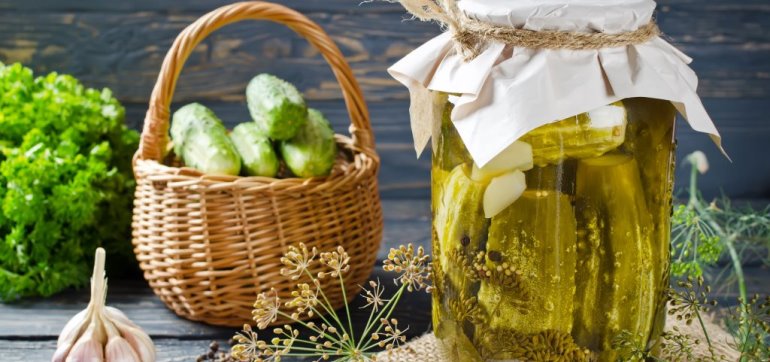

 (5 ratings, average: 4,20 out of 5)
(5 ratings, average: 4,20 out of 5)

